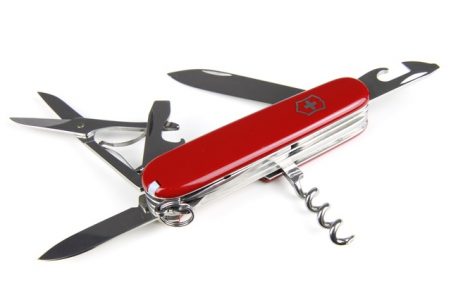Many students are suspended or placed up for school expulsion for possession of knives. Although what a “knife” is, seems somewhat obvious, which weapons or dangerous objects actually legally count as “knives” for purpose of expulsion is defined in the Education Code. The legal definition is important, as some things parents may think are “knives” may not be.
The Legal Definition of a Knife in School Expulsions
Per Education Code section 48915(g) a weapon which is a “knife” for purposes of a student school expulsion is:
[A]ny dirk, dagger, or other weapon with a fixed, sharpened blade fitted primarily for stabbing, a weapon with a blade longer than 3 1/2 inches, a folding knife with a blade that locks into place, or a razor with an unguarded blade.
Okay- you may feel like you are somewhere back in time when trying to figure out what a “dirk” or “dagger” is, but these are not the most common items students possess.

The Two Most Common Knives Students Have at School
At schools students tend to get caught with certain types of weapons that count as “knives.” The two most important “knife” definitions are:
1) Weapon with a blade longer than 3 1/2 inches
2) Folding knife with a blade that locks into place.
Why Students Unintentionally Get Caught With Knives At Schools
The reason students sometimes end up nailed with possession of a “knife” at school is this: a student goes fishing over the weekend, leaves his multi-tool, key chain, or swiss army knife with a blade that locks into place in his pants pocket, and throws those same pants on Monday. He then has a “knife” at school.
It does not matter if the student did not intend to bring the knife to school, nor that he used it for fishing and forgot about it.
A student will likely be in big trouble if a weapon or knife is discovered at school.
Of course, many students, finding a multitool or knife in their pants pocket while at school, take it out, fiddle with it in class, show it to friends, or simply use it to do something unimportant. That is a very very bad idea.
Locking Blades, Regardless of Size Fit the Knife Definition
In fact, even if a “knife” blade is minuscule, dull, and looks like it could not hurt a bug, if it locks, the school may choose to apply their “zero tolerance” viewpoint and put a student up for school expulsion.

What if the Blade Does Not Lock?
If the same multitool does NOT have a locking blade, the length of the blade will have to be measured. Per the law, the issue is whether the non-locking blade is 3.5 inches or larger.
If a blade is 3 inches long, attached to a multi-tool, and not “primarily for stabbing,” this may open a door for a really good defense of a knife charge as the object may not be a “knife” per the legal definition.
Please note: the student still may be put up for school expulsion for other reasons such as possession of a weapon or “dangerous object,” but that is a story for another day.
School Personnel May Not Understand “Knife” Nuances
Now, don’t count on the schools understanding the nuances of weapons or the legal definition of a “knife” in expulsions. This may be a matter to be raised by the student’s legal counsel. Parents can also show school officials the legal codes and challenge them.
Check the Law First
If a student is up for expulsion for possession of a knife, check the legal definition of a “knife” related to school expulsions to be sure what they have really IS a “knife” under the law. If it isn’t then any discipline for student possession of a “knife” may be open to attack.
Student suspension and expulsion lawyer Michelle Ball helps with school expulsions for knives, fights, weapons, and many other expulsion bases. As an attorney in Sacramento Michelle can reach across California, to places such as Los Angeles, San Francisco, Santa Rosa, Roseville, Auburn, Tahoe, Elk Grove, Natomas, Carmichael, Vacaville, and tons of other California locations.
Originally published September 14, 2011

